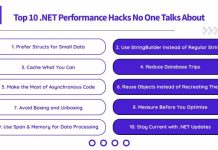
When B2B sales slow down, it’s rarely random. The root cause is often a lack of visibility into what buyers are thinking and doing. Without real-time insight, even strong leads stall. Reps are left guessing, follow-ups miss the mark, and deals that once felt close begin to drag. Momentum in B2B sales depends on knowing what’s happening across every buyer interaction—not just reacting after silence sets in.
Gaps in data, contact accuracy, and channel connection don’t just delay progress—they quietly sabotage it. Fewer deals fall through when teams have a complete view from the start. Here’s where breakdowns happen—and how to fix them.
B2B Ecommerce Solutions Give Sales Teams Visibility Into Buyer Intent
Modern sales teams use B2B ecommerce solutions to better understand buyer behavior. With access to real-time data—like page views and abandoned carts—they can quickly spot when buyers are hesitating. These insights help sales reps tailor their outreach, focusing on what clients are actually interested in. This kind of targeted communication increases the chances of closing a deal.
Dashboards also show where buyers get stuck, like products that don’t catch their eye right away. With this insight, teams can make smarter choices about where to place products or what promotions to run. Regularly checking this data helps salespeople stay in tune with what buyers want and follow up more effectively.
Fragmented Buyer Data Leads to Missed Opportunities
A buyer shows renewed interest—visits a pricing page, reopens a proposal—but the rep never sees it. Their data lives in five different tools, none of them synced. Without the full story, reps miss signs that it’s time to re-engage. Instead, they send a generic follow-up weeks later, unaware the window already closed.
Centralizing activity in one system gives teams a running start: they can track patterns, follow up with purpose, and revive stalled deals with relevant context. A clear view across accounts means fewer missteps and more momentum, even in high-pressure cycles.
Static Contact Lists Hide Buyer Turnover and Role Shifts
A rep follows up with a key contact—only to find out they left the company months ago. Outdated contact lists quietly undercut sales momentum, especially in industries with high turnover. When buyer roles shift and no one catches it, teams end up pitching to people with no authority or insight.
That’s how deals stall without anyone realizing why. Keeping contact data current isn’t just admin work—it’s a sales advantage. CRM systems and automated tools can detect role changes and prompt timely updates. With the right checks in place, reps stay connected to decision-makers and avoid wasting time on dead-end conversations.
Disconnected Sales Channels Break Buyer Context
When sales happen through different channels that don’t connect—like email, phone, and online chat—it becomes harder to keep track of the buyer’s full experience. Each interaction is treated as separate, which makes it tough to understand the buyer’s full story. Orders that go through multiple paths might never be combined into one view. That can lead to mixed messages or awkward follow-ups that make the process confusing for the buyer.
This kind of disconnection can hurt customer satisfaction. If buyers have to repeat themselves again and again, they often get frustrated and lose interest. Connecting all sales channels helps teams share information more smoothly and offer a better experience, which can lead to long-term loyalty.
Delayed Feedback Loops Create Bottlenecks in Sales Execution
Managers also lose valuable perspective when buyer feedback is delayed or fragmented. Without a clear view of how buyers are responding, it’s hard to coach reps, adjust messaging, or allocate resources where they’ll have the most impact. Strategy starts to drift, and teams end up spending time on outreach that feels disconnected or irrelevant.
Instead of leading with data, managers are left relying on instinct or incomplete information. This not only slows performance—it creates blind spots that can derail high-value opportunities. Regular, real-time feedback makes it easier to spot friction, track buyer sentiment, and act with clarity. The result is faster pivots, sharper execution, and better alignment between what buyers expect and how sales teams engage.
Understanding buyer behavior in real time gives sales teams a measurable edge. When data is current, contacts are valid, and channels are connected, outreach becomes sharper and more timely. Sales teams can stop guessing and start responding to real signals. Missed opportunities shrink, conversations move faster, and reps spend less time chasing dead ends. In B2B sales, speed and clarity aren’t luxuries—they’re deal-makers. The teams that act on insight, not assumption, are the ones that win more often and build lasting client trust. Investing in visibility today builds the foundation for stronger deals and smarter decisions tomorrow.










